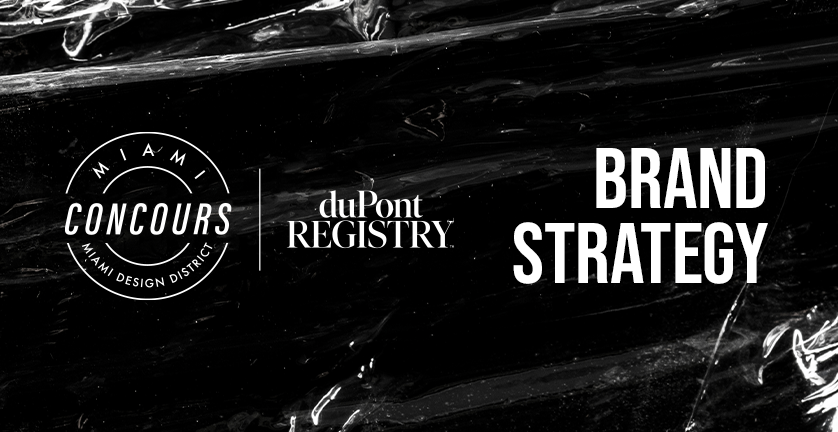
Because your brand is your calling card, how you position your brand in front of your current and prospective customers or clients matters. In this blog post, we’ll examine the four steps you can take to build your brand that your marketing team can follow to push you to new heights.
At duPont Registry Digital, we’re all about defining the branding services and content services you need that uniquely fits your business. Every industry and every brand is different, but what makes you stand out and be the best in your field? Let’s find out.
1. Understand Your Target Audience
Building a brand starts with the first step: Knowing who you’re building it for. To create your target audience, follow these steps:
- Understand who is interested in your product or service. Consider their lifestyles, ages, genders, locations, and income so your demographic looks more full and substantial–you’re essentially creating an entire buyer persona. If, for example, you’re looking to sell expensive athletic shoes, your target audience could be middle-to-high-income earners near the age of 30-40. However, if your product is tending toward streetwear, your target audience will most likely be younger men.
- See the data. When looking at the statistics and data, you can have a more complete picture of your sales. This will help when you’re looking for more information regarding your consumer’s habits and buying tendencies. Stats are also great factors in determining whether your brand will be attractive to a certain demographic. For example, data and statistics could prove that millennials are more likely to buy products online and those that are sustainable with an eco-friendly lifestyle. You can also recruit your own data through surveys, or an outside marketing firm to gather data on your behalf.
- Stalk the competition. Studying companies in the same field and industry is beneficial for your own path. Learning from established companies who are doing similar things can help you refine your marketing and selling strategies. Try heeding the information about how they’re creating their campaigns and targeting certain groups more than others. Compare their data with yours to understand your brand at a deeper level.
- Speak directly to your target audience. Engage with the people you think are most likely to buy your product. Determine what their desires, fears, and needs are, and what other brands they buy or invest in. Create a more detailed analysis of your customer’s buyer persona to hone your messaging.
After you have decided on a target audience, you can start creating a brand that will attract them.

2. Distinguish Your Product and Business
Distinguishing your business from the competition is the marker of your success. What sets you apart from the marketplace? In order to find this, you need to compile information about your competitors, including details on their pricing, products, and markets, in addition to their marketing strategies. Look for their strengths and weaknesses involving their services, products, and areas they fall short in the market. Take this into account when coming up with your USP (unique selling proposition) and marketing.
So you’ve already investigated the competition? Great. Now is the time to develop your unique selling proposition. A USP is basically a logline of your brand. It’s a short statement that tells people what you sell. It should include your value and highlight your unique product or service.
3. Define Your Company’s Personality
When it comes to your brand’s identity, a huge step involves discovering your brand’s personality. Aside from products and services, your target audience will be one of the helpers along the way in determining who you are and how you appear in the marketplace. For example, if your regular client or customer is a middle-aged mom, you’re going to want to have a playful, maternal, authoritative voice. You can come up with your brand’s personality by brainstorming with your team and analyzing your client. Think of the brand as a living breathing human with wants, needs, fears, and vocabulary. Verbalize those abstract ideas to create words that speak to your target audience.
Associate your brand with visuals
Associating your brand with a visual through website design and other visual components is really helpful in determining marketing copy and visuals. For example, if your brand is eyelash extensions, maybe your logo is a woman’s face or a tree to symbolize long, elegant branches as eyelashes.
Go wild with creativity here as that will speak the loudest among the rest. After all, it’s your creativity and imagination that will be unique and original in an oversaturated market.

4. Your Attention-Grabbing Logo and Slogan
A logo that’s appealing and attractive can do wonders for your business, and a catchy slogan can keep your business in the hearts and minds of your customers.
- The Logo: The logo you choose conveys your image and personality. Consult with an agency like duPont Registry Digital to ensure that your design is professional, effective, and well-designed. The designers at duPont Registry Digital will help refine your abstract or verbal ideas into a visual identity and visual marketing materials that define your brand’s story–this includes fonts, colors, logo options, iconography, and more general designs or merchandise.
- The Slogan: Slogans that are pithy and catchy are ones that are remembered during the marketing campaign and long afterward. A slogan should be short and encapsulate what your brand does and how it’s different or unique in just a few words. It’s the tagline of your brand that can always be adjusted for marketing purposes and different campaigns. For example, for one of our clients, My Peeps, a free online family tree maker, the slogan we created for them is “Family generations in one place.” It encapsulates multiple years and decades of family members that can meet on this one platform–simple, memorable, and effective.

Your brand needs to mark the company culture. Your company’s culture should reflect your brand identity design and brand identity creation as well, including dress code, behavior, and voice. Setting the standard for your brand development is critical to ensure its longevity in the market.
Overall
Your digital strategy should fit the unique requirements of your business and target audience. There is no one-size-fits-all approach, so it’s important to discover what works best for your company and monitor the impact of each action on your overall success. As a creative agency, we offer website design, app design, brand development, and content services. Schedule a call to see how we can help you with our unique integrated marketing strategy.
If you’re in the market for a new brand or a revolutionary one, contact duPont Registry Digital’s team to get a free one-on-one consultation to see where your brand can go.


















